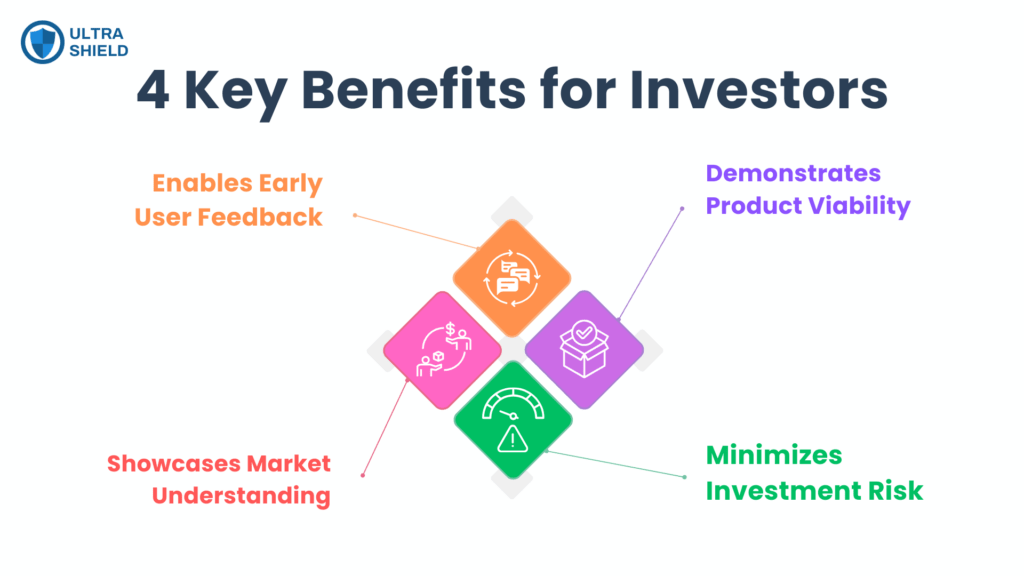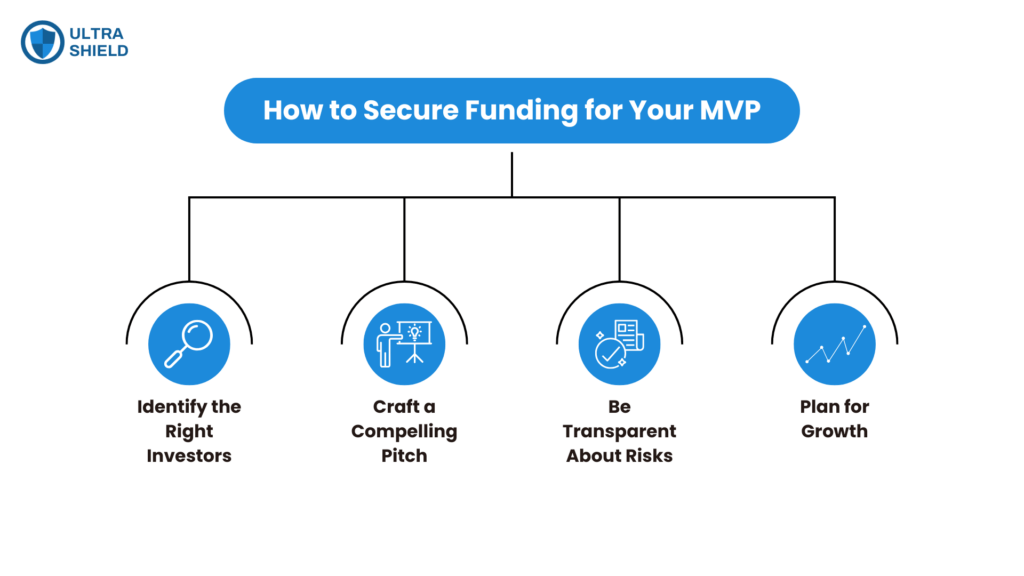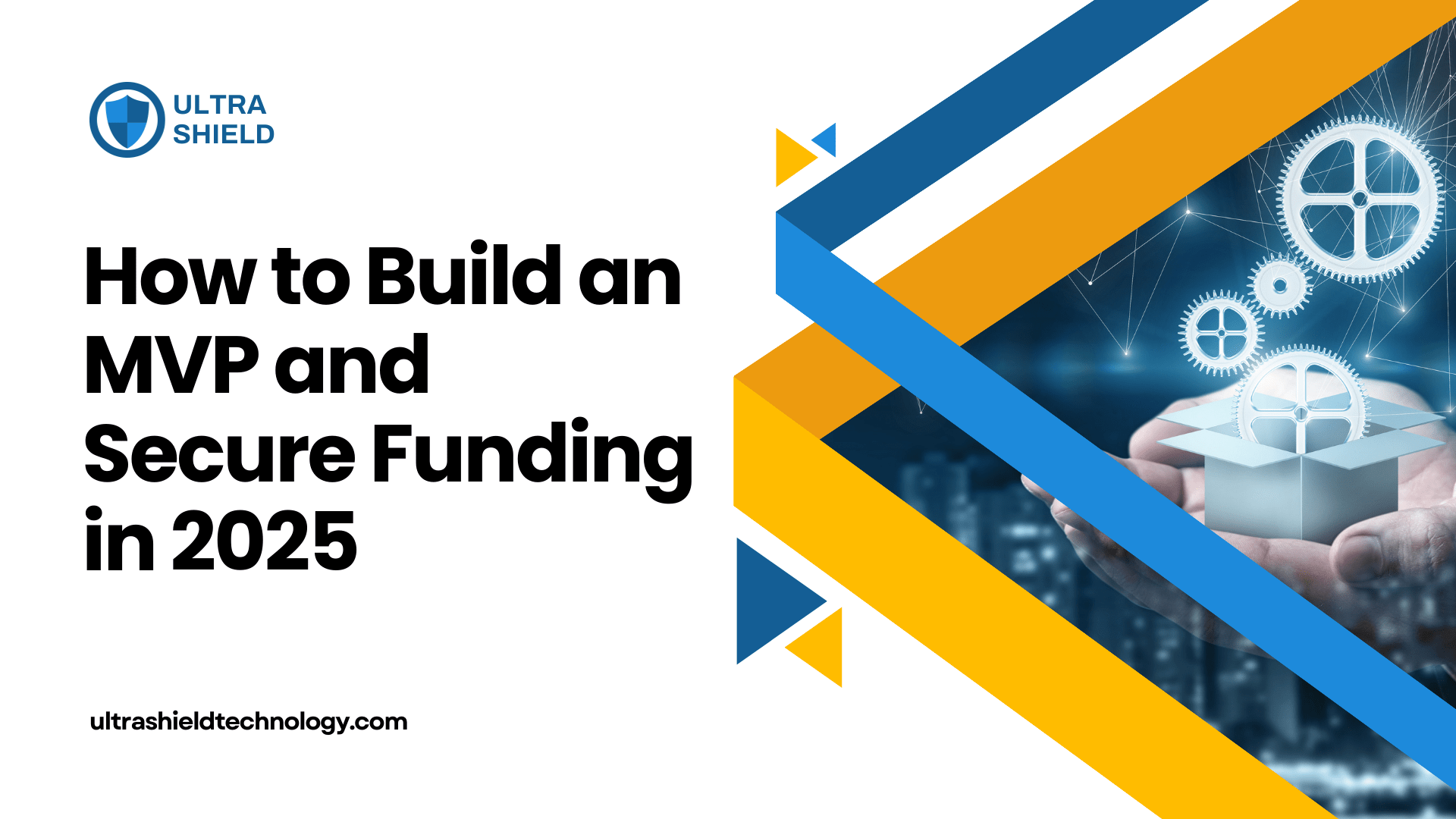In today’s fast-paced digital landscape, startups are achieving success by leveraging Minimum Viable Products (MVPs) to test their ideas with real users while minimizing risk. It is a streamlined version of your product that focuses on core functionalities to solve a specific problem. By launching an MVP, you can validate your idea, attract early adopters, and gain the attention of investors who recognize its potential.
At Ultrashield Technology, we specialize in building high-quality MVPs that empower startups to accelerate growth and secure funding. This guide will walk you through the MVP development process and how to position your product for investor interest in 2025.
Why MVPs Matter: 4 Key Benefits for Investors
1. Demonstrates Product Viability
Launching a product showcases the potential success of your product. Investors prefer tangible results over ideas on paper. By developing a basic but functional MVP, you can demonstrate real demand and user engagement, making your startup a more attractive investment opportunity.
2. Enables Early User Feedback
One of the biggest advantages of an MVP is the ability to collect user feedback early in the process. Understanding user preferences allows you to refine and improve your product before a full-scale launch. Investors are more likely to support businesses that adapt based on real-world insights.
3. Showcases Market Understanding
A well-developed product is backed by thorough market research. It reflects your knowledge of the industry, target audience, and competition. Investors seek founders who deeply understand the market and have a strategic approach to solving pain points.
4. Minimizes Investment Risk
A fully developed product can be a risky investment if it hasn’t been tested. An MVP reduces this risk by allowing investors to evaluate user adoption and market response before committing to larger investments.

Step-by-Step Guide to Building an Minimum Viable Product
1. Conduct Market Research
Before starting development, analyze your target audience and competitors. Identify key pain points and study existing solutions in your industry. Understanding user behavior will help shape your MVP’s core features.
2. Define Your Target Audience
Clearly outline who your product is for. Develop user personas to align your MVP with real customer needs and expectations. Defining your audience ensures that your product resonates with potential users and delivers real value.
3. Focus on Core Features
An MVP should only include the most essential functionalities needed to address a key problem. Avoid feature bloat and focus on delivering a streamlined, effective solution that meets the primary needs of your users.
4. Develop and Launch
Partnering with an experienced development team like Ultrashield Technology ensures that your product is built efficiently and meets industry standards. After development, launch your MVP to a select audience for testing and feedback.
5. Iterate Based on Feedback
Gather insights from early adopters and refine your MVP accordingly. This iterative process helps you improve usability, enhance functionality, and prepare for scaling your product.
How to Secure Funding
1. Identify the Right Investors
With your MVP in hand, start researching investors who specialize in early-stage startups. Consider angel investors, venture capitalists, and crowdfunding platforms. Tailor your pitch to investors who align with your business vision.
2. Craft a Compelling Pitch
Investors want to see potential for scalability. Highlight how your MVP solves a real problem, demonstrate market demand, and outline your future roadmap. Use real data from your MVP launch to strengthen your pitch.
3. Be Transparent About Risks
Investors appreciate honesty. Address potential risks and challenges head-on while showcasing your plans for mitigating them. Transparency builds trust and confidence in your startup’s ability to navigate obstacles.
4. Plan for Growth
A clear growth strategy is essential. Investors want to know how you plan to scale, acquire users, and expand revenue streams. Demonstrating a well-defined roadmap increases your chances of securing funding.

Real-World Success Stories
Many global giants started with MVPs before achieving massive success:
- Facebook – Initially launched as a platform for Harvard students with basic profile features.
- Airbnb – Started as a simple site for renting out an air mattress in a living room.
- Uber – Launched with just a simple ride-booking feature before evolving into a global transportation network.
These companies proved that starting small, gathering feedback, and iterating based on user needs is the key to long-term success.
Conclusion
Building an MVP in 2025 can be a game-changer for your startup. It allows you to test your idea, attract early adopters, and secure investor funding without excessive risk. By focusing on core functionalities, refining your product based on feedback, and showcasing your market expertise, you increase your chances of success.
Are you ready to bring your MVP to life? Ultrashield Technology has the expertise to turn your idea into a scalable digital product. Let’s build something great together!
Read More: MLOps: The Backbone of Modern Machine Learning Applications

